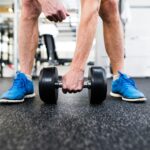Workout intensity isn’t about going as hard as possible every time. It’s about understanding your current ability and matching your effort to that, especially during seasonal transitions. With fall settling in across Bellevue and Kirkland, routines often shift indoors and goals start to change. Whether you’re new to movement or already doing high intensity training in Bellevue, how you train should match where your fitness actually is, not where you wish it were.
If your body’s ready for more, intensity can be a great tool. But getting it wrong, either too light or too heavy, can stall progress or lead to frustration. Fall is a good season to tune into your fitness baseline and adjust before winter hits.
Why Intensity Matters More Than Duration
Many people assume longer workouts are more effective. But it’s the quality of your effort that usually produces better results. A short workout that feels challenging for you, without wiping you out, is often more valuable than an hour of going through the motions.
The idea of intensity gets misunderstood. It doesn’t always mean sprinting or tossing heavy weights. One person’s intense session might be a fast-paced stair climb. For another, it might be a strong walk with hills. What matters is how your body experiences the effort.
In Bellevue and Kirkland, we see workouts tailored to this all the time. Local trainers offer shorter circuits or interval-style plans where the goal is effort over time. It’s about challenging your limits, whatever those are right now. Plus, joining a small group training session can give you structured support while keeping the experience personal to your own pace.
Starting Points: Knowing Your Current Fitness Level
Before adjusting intensity, it helps to understand where you’re starting from. You don’t need fancy trackers or elite experience. Pay attention to how your body feels during and after basic movement. Are you winded after walking a few blocks uphill? Does a 30-second wall sit feel like too much?
Try these simple markers:
– Go up one flight of stairs at a steady pace. Notice your breath at the top.
– Time a wall sit, holding until your legs start to shake. Stop just before full fatigue.
– Do a light circuit of air squats, modified pushups, and gentle lunges. Track how long you feel fresh.
Most fitness facilities in Kirkland and Bellevue build programs that meet people where they are. That might mean scaled options for advanced moves or lighter versions of circuits so someone recovering from injury can join the same session as someone training for an event.
When To Dial It Up or Down
Your body gives you signs when effort is too much or too little. If your muscles stay sore beyond two days, or you feel drained instead of energized after workouts, back off. Mood swings and sleep disturbances can also indicate you’re pushing too far past your capacity.
On the other side, if recovery is fast, energy is consistent, and you’re able to add reps or speed without struggle, it might be time to raise the bar. That could look like:
– Adding resistance to strength moves
– Shortening rest time between sets
– Increasing speed slightly in intervals
– Shortening total workout time while keeping intensity high
Listening to feedback from your body, rather than trying to match someone else’s plan, is what builds safe, long-term strength. Mental barriers can be just as limiting as physical ones—if you feel stuck, it might be worth exploring approaches to breaking through mental blocks in strength training for a fresh angle.
Using Local Spaces and Seasons Wisely
Fall brings cooler weather and more breathable air, which helps many people feel more energized in motion. In Kirkland and Bellevue, early fall is great for using outdoor spaces to explore new ways of testing intensity.
Local parks, trails, and stairways offer natural cues for pacing. Try a loop at Watershed Park in Kirkland or stair intervals at Meydenbauer Bay in Bellevue. Use hills for effort-based bursts, followed by walking recovery. You can let the terrain guide intensity without needing heavy equipment.
When sessions move indoors, gym circuits provide structure. You can blend strength with speed to create a solid workout that gets your heart rate up and muscles working. And since daylight shifts fast in October, these flexible formats support consistency without needing long time blocks.
High Intensity Doesn’t Mean High Pressure
There’s a myth that “high intensity” means extreme moves or nonstop circuits with no breaks. That’s not the goal. Intensity should feel challenging, not overwhelming. It works best in short bursts, layered with manageable exercises.
Let’s say you’re in a group doing high intensity training in Bellevue, maybe the session is 30 minutes, but you’re only pushing hard in short windows while recovering through easier pacing. You don’t have to be breathless the whole time.
In a solo Kirkland workout, adding tempo to bodyweight moves like squats or planks can increase difficulty without needing to go full throttle. It’s the way you do the move, not just the move itself.
Not sure what to expect in a shared workout? Here’s a straightforward look at what a group training session actually looks like so you can ease in with confidence.
We want intensity to stretch your limits gently, not break them. With the right adjustments, you’ll feel strong, not beat up.
Be Smarter, Not Just Stronger
Pushing yourself smartly leads to steady progress. Matching your effort to your current level makes workouts feel doable, even fun. That builds momentum.
Kirkland and Bellevue provide plenty of ways to keep training aligned to your fitness level. From local trails with natural intervals to modular gym circuits that scale with your ability, you have options. You just have to pick the version that fits where you’re at today, not where you think you should already be.
Overtraining doesn’t get better results. In fact, it often disrupts consistency. The goal is to move well, feel better, and stay consistent. When you adjust intensity with purpose, you make space for long-term gains.
Whether your goal is to get stronger, move easier, or keep energy up during a busy fall, training with the right intensity helps you stay on track without losing steam.
Brain Training and Further Reading For Faster and Easier Results
PJ has written a Kindle Book about the mind-body fitness connection and has also designed customized brain training exercises for people who experience struggles, cravings, and mental blocks. These mental techniques literally rewire your brain, based on what makes sense to your unique brain type, discovered through his Brain Type Test. If you find yourself at a plateau or frustration point, one or both of these tools could be your breakthrough to faster, easier, and more permanent results.
When you’re ready to make your time and effort count, our take on high intensity training in Bellevue helps you match up focused programming with how your body actually feels. At X Gym, we keep things flexible and personal, whether you’re just getting started in Kirkland or looking to push harder without burning out.









